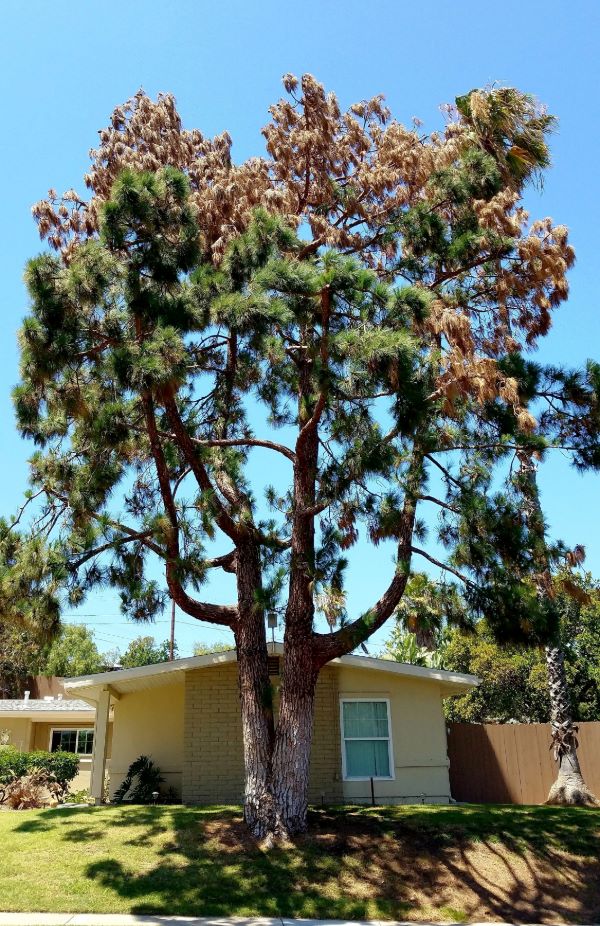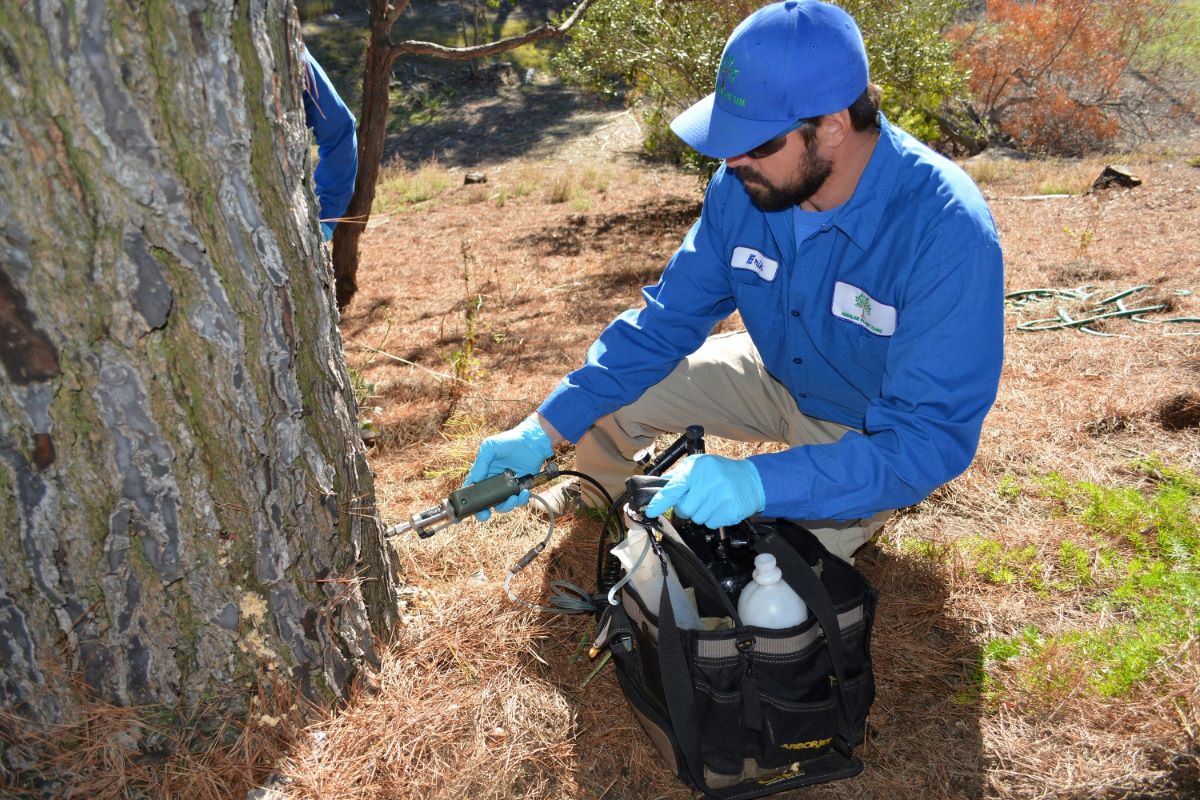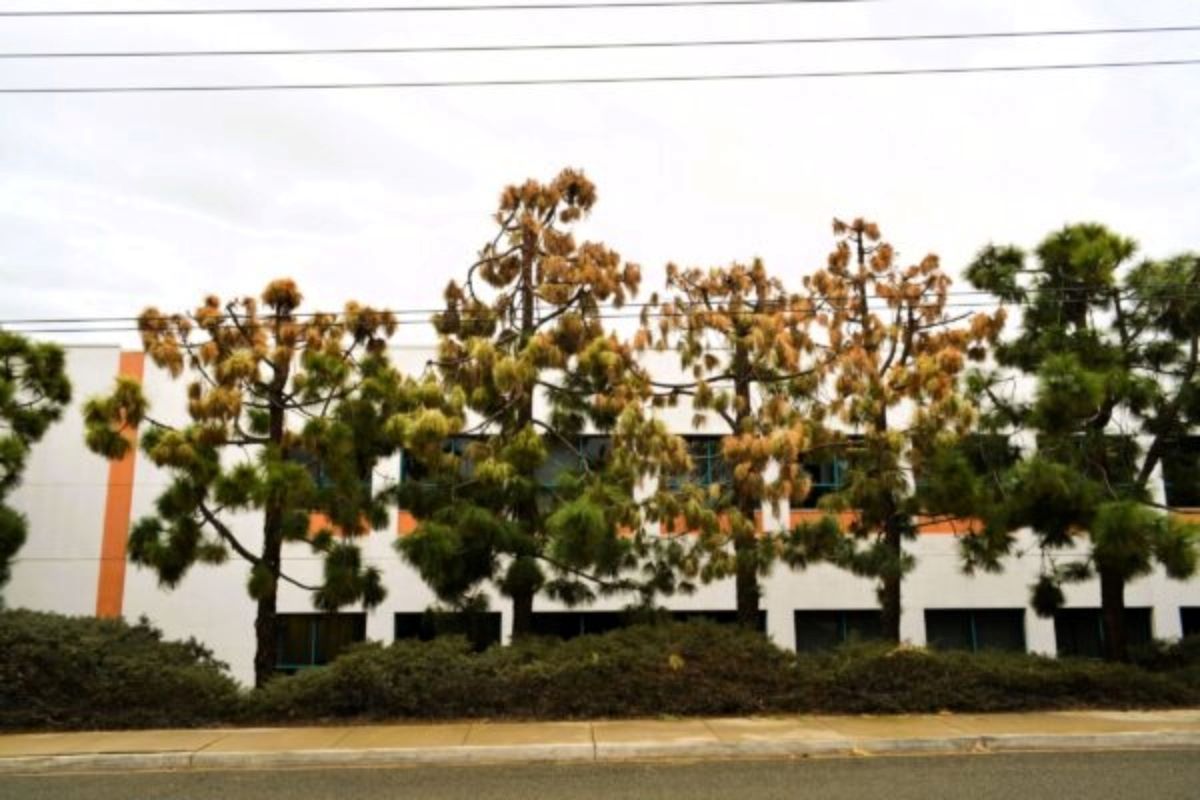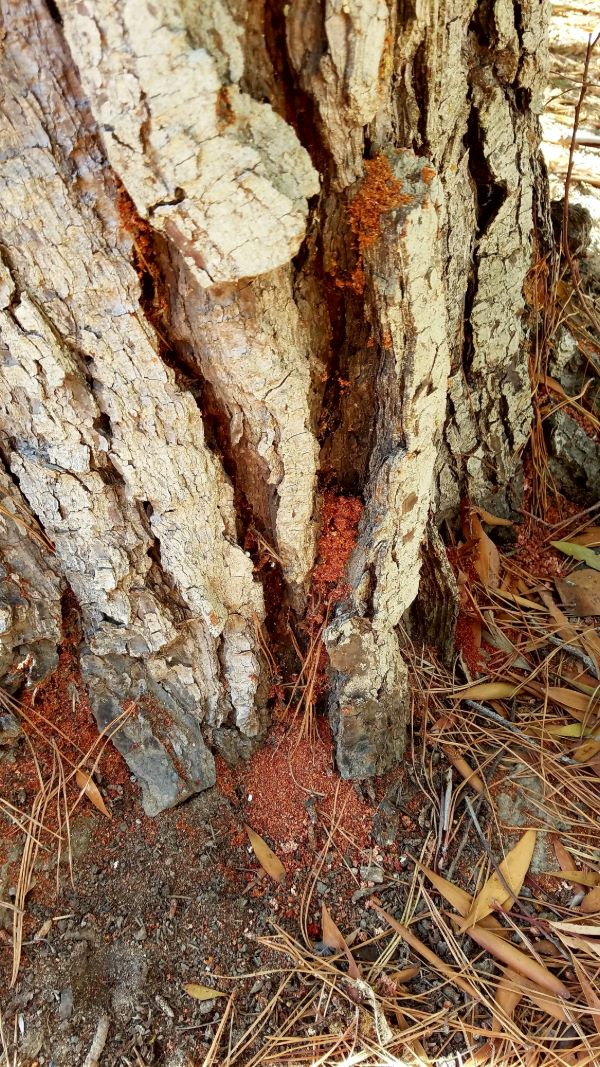
Bark Beetles
Bark Beetle adults are small (< ¼ inch), cylindrical, hard-bodied insects about the size of a grain of rice. Most species are dark red, brown, or black. These small but powerful beetles are the biggest threat to our urban and rural Pine trees.
According to the U.S. Forest Service, tree mortality from bark beetles and drought has reached over 102 million trees since 2010. Trees that are weak or stressed due to unfavorable growing conditions, such as drought, disease or poor tree care, are most susceptible to Beetle attacks.
Signs of Infestation
Bark Beetles mine the inner bark (the phloem-cambial region) on twigs, branches, and trunks of trees. They lay their eggs in the inner bark, or moist phloem, and feed off the inner living tissue. This inhibits the tree’s ability to transport water and nutrients throughout the tree. Common symptoms of an infestation are:
- Pitch tubes, “sap” streaming down the trunk and boring dust
- Emerging adults bore out through the bark, leaving it riddled with a ‘shot hole’ appearance.
- Tree death appears to happen quickly. Foliage changes color from green to yellow to reddish brown throughout the upper portion of the tree crown.
Attacking Bark Beetles produce a powerful attractant (pheromone) which draws additional Beetles from the surrounding area. Bark Beetles can kill a tree in as little as two to four weeks during warm weather.

Management and Treatment
In effort to defend against Beetle attacks, a Pine will “push out” an intruder Beetle with a heavy “pitch” flow of sap. This will flood the Beetles’ tunnels as they bore into the tree. Drought, root disease or stress may affect pitch flow and limit the tree’s capacity to resist future Beetle or other pest attacks.
Prevention of tree stress is by far the best way to prevent possible Beetle infestation.
- Reduce water stress, especially during periods of heat. Promote deep watering to the mid to outer drip line of the individual tree.
- Limit unnecessary thinning or pruning to trees. Pruning a stressed tree will create an “easy” entry point for pest. Most Pines require little to no pruning. If it is necessary to remove live, lower limbs or shorten limbs for clearance, prune from November to March when beetles are not as active.
- If a Pine has a verified Beetle infestation and die-back of the canopy exceeds 25%, the Pine must be considered for removal as there is little hope in saving it.
Keeping a tree that is infested will threaten neighboring Pines to attacks as adults exit the infested tree and look for the nearest target.
Monitor, Monitor, Monitor
If properly timed and applied, insecticidal treatments by a licensed professional can help prevent and control Beetle populations.
- Bark / basal sprays are an effective way to create a temporary “barrier” on the outer bark of the tree. Common entry point such as the lower and mid trunk, large branches and limbs can be treated to help reduce new Beetle entry points.
- Systemic micro injections to the lower base of the tree trunk will provide immediate and effective systemic control throughout the entire tree. Systemic micro injections have proven to prevent and control Beetle and wood-boring pests that feed on the treated tree for upwards of 18-24 MONTHS!
Keep a watchful eye on your trees. If there is a sudden change in appearance in your trees or a neighboring tree, call Aguilar Plant Care to help evaluate.






